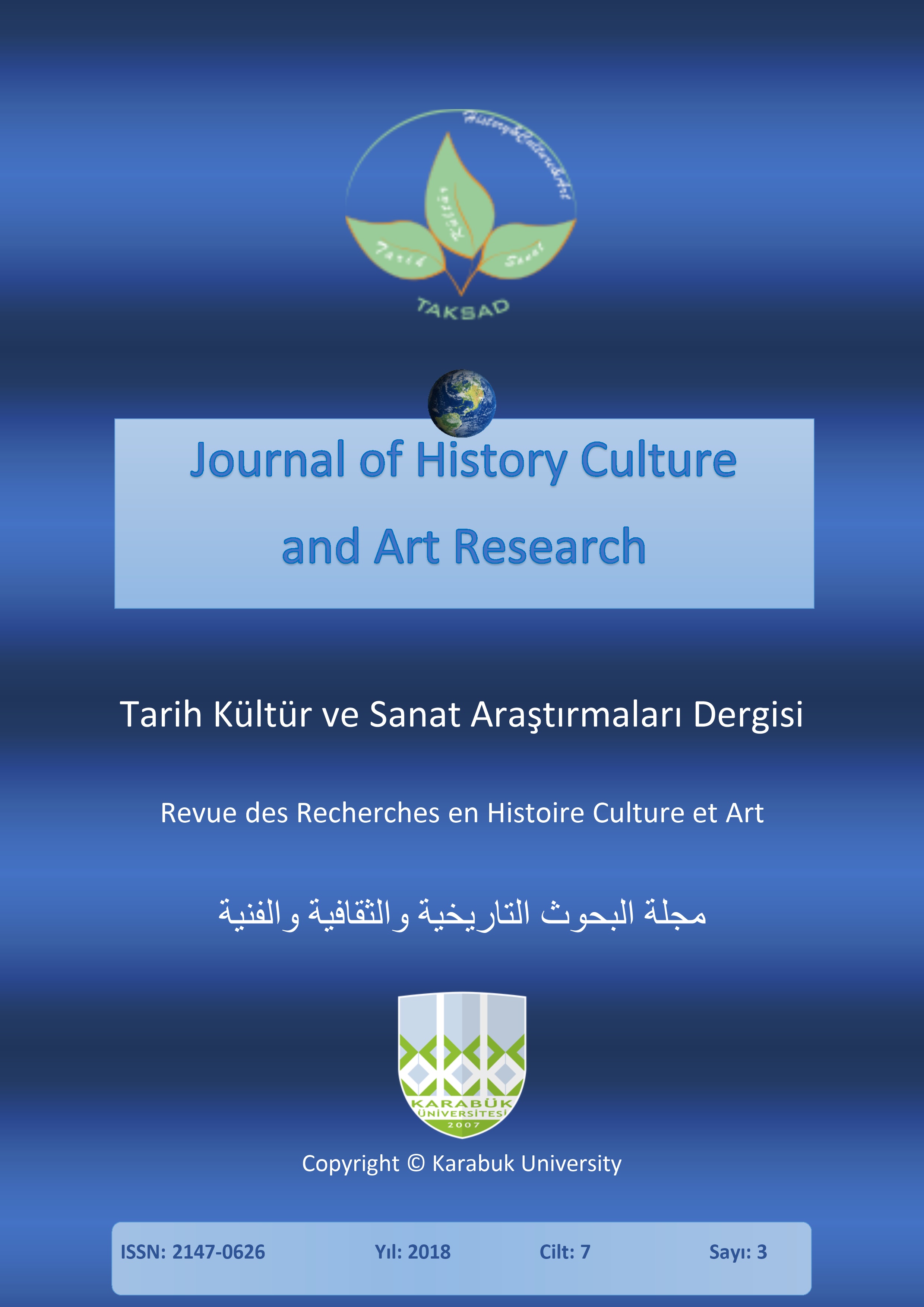Stable and Transformed Motives in the Yakut Olonkho (Northern Epic Tradition)
DOI:
https://doi.org/10.7596/taksad.v7i3.1722Keywords:
Northern olonkho, Plot motifs, Local epic traditions, Regional differences, Tales, Yakut folklore.Abstract
In Yakut folklore studies, depending on the territory of existence, there are three traditions of narrative: Central, Viluysk and Northern. In modern science, the phenomenon of stable regional features of the plot motives of the Yakut olonkho is still relevant. The article is based on the comparative-typological study of the Northern olonkho on the material of the legends of the four Northern districts (ulus) in order to identify stable northern regional traditions in motives and establish ways and means for their transformation. The theoretical substantiation of the research is the works of folklorists on the stability of the main plot of the oral tradition (A. Lord), about a single type (with possible internal subdivisions into subtypes) of epic singers of each ethnic tradition (B.N. Putilov), about the originally creative epic beginning (Parry and A. Lord), on the influence of the improvisation of the narrator on the geographical location of folklore (V.M. Zhirmunsky), on the motive as a plot-forming element (B.N. Putilov), on the uniformity of constructing the main constituent element of the works of the oral people creativity V.Ya. Propp), regional and local traditions of the Yakut narrative (V.V. Illarionov, T.V. Illarionova, A.A. Kuzmina, G.S. Popova, G.A. Sosina), the features of the Evenk and Evenki epos (A.A. Burykin), about typical places for the epic of the Turkic-Mongolian peoples of Siberia (E.N. Kuzmina). As a result of the study, stable epic motives of the Northern olonkho are determined, some conclusions of Yakut researchers are expanded on its features, the position about the existence of a stable northern tradition is confirmed, the assumption is suggested of the mutual influence of the traditions of the Northern olonkho and the epic traditions of the Even and Evenki eposes.
References
Burykin, A. A. (2017). To the typological characteristics of the earliest forms of the epic: on the materials of the North Tungus peoples. Vestnik of the North-Eastern Federal University: Epic series, 4 (8), 5-16, doi: 10.25587/SVFU.2017.4.8491.
Duyakov, G. V. (2011). Kyys D'uuraja buhatyyr / ed. A. A. Kuz'mina. Yakutsk: Bichik.
Emelyanov, N. V. (1980). Plots of the Yakut Olonkho. Moscow: Nauka.
Hero Mas Batyy: Olonkho (2016). "Orto Halyma Olonkhokloro" ("Olonkho of Srednekolymsky distrcit"). Yakutsk: Bichik.
Illarionov, V. V. (1982). The Art of Yakut Olonkho-tellers. Yakutsk: Yakutknigoizdat.
Illarionov, V. V. (2006). Yakut Olonkho and problems of revitalization. Novosibirsk: Nauka.
Illarionov, V. V. (2016). Local Traditions of Olonkho-tellers: Specifics of Performance. Yakutsk: NEFU Editorial House.
Illarionov, V. V. (2016b). Orto Halyma olonghoһuttaryn ugehstere. Orto Halymaolongholoro. Yakutsk: Bichik, 5-16.
Illarionova, T. V. (2008). Textology of olonkho "Mighty Er Sogotokh": a comparative analysis of different records. Novosibirsk: Nauka.
Kuz’mina A. A. (2013). D'aany olonhoto uonna D. A. Tomskaya // D'aany – olonho tѐryut uus dojduta / comp. E.N. Protodyakonova, M.A. Struchkova. Yakutsk: Editorial Department of A.E. Kulakovsky House of Friendship of Peoples, 15-17.
Kuz’mina, A. A. (2014). The plot features of olonkho by D.A. Tomskaya "Yuchyugey Yudyugyuyen, Kusagan Hojugur". Philological Sciences. Questions of theory and practice. Tambov, Diploma, No. 1 (31): in 2 hours Part 2, 95-97.
Kuz’mina, E. N. (2005). Index of typical places of the heroic epic of the peoples of Siberia (Altai, Buryat, Tuva, Khakas, Shor, Yakut). Experimental publication. Novosibirsk: Siberian Branch of the Russian Academy of Sciences.
Kuzmina, A. A. (2014). Olonhoof Vilyu region: existence, plot-composition structure, images. Novosibirsk: Nauka, 2014.
Kuzmina, A. A. (2015). Verkhoyansk tradition of olonkho. Philological Sciences. Questions of theory and practice, No. 1 (43), part 2, 113-115.
Lord, A. B. (1994). Narrator. Moscow: Science.
Meletinsky, E. M. (1963). The origin of the heroic epic (Early forms and archaic monuments). Moscow: Eastern Literature.
Nikiforov, V. M. (2010). From the archaic olonkho to the early feudal epic. Novosibirsk: Science.
Okladnikov, A. P. (1955). Yakut epic (olonkho) and its connection with the South. History of the Yakut Autonomous Soviet Socialist Republic, vol. 1, M-L, Izd-vo AN SSSR, 257-277.
Olonkho-tellers of Yakutia: Reference book (2013). M.K. Ammosov North-Eastern Federal University, Research Institute of Olonkho. Yakutsk: "Saidam" Book Publishing House.
Oymyakon Olonkho (2017). Yakutsk: Bichik.
Popova G. S. & Sosina G. A. (2013). Local traditions of the epic olonkho. Yakutsk: "Dani-Almas" company.
Propp, V. Ya. (2003). Morphology of a fairy tale. Moscow: The Labyrinth.
Pukhov, I. V. (2004). The heroic epic of the Altai-Sayan peoples and the Yakut olonkho. Yakutsk: SB RAS Publishing House.
Putilov, B. N. (1975). Motive as a plot-forming element. Typological research on folklore. Collection of articles in memory of V.Ya. Propp. Moscow, 141-155.
Sleptsov, D. N. (1994). Khetor Mulgun. Yakutsk: YSC of the Siberian Branch of the Russian Academy of Sciences.
Tomskaya, D. A. (2011). Yuchugey Yudyuguyen, Kusagan Khojugur / comp. V.V. Illarionov, V.S. Nikiforov. Yakutsk: Publishing House of the IHRISN of the Siberian Branch of the Russian Academy of Sciences.
Downloads
Published
How to Cite
Issue
Section
License
All papers licensed under Creative Commons 4.0 CC-BY.- Share — copy and redistribute the material in any medium or format
- Adapt — remix, transform, and build upon the material for any purpose, even commercially.
Under the following terms:
Attribution — You must give appropriate credit, provide a link to the license, and indicate if changes were made. You may do so in any reasonable manner, but not in any way that suggests the licensor endorses you or your use.
- No additional restrictions — You may not apply legal terms or technological measures that legally restrict others from doing anything the license permits.







